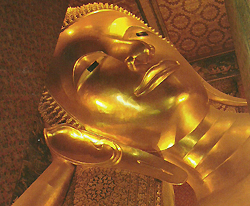
2. DIRECT + EARLY REFLECTED
This is where you make corrections for boundary placement of a loudspeaker and/or interaction of multiple loudspeaker arrays.
The optimization of the loudspeaker arrays can also be done in the shop unless you are making significant changes to the arrays at each location.
These first two steps are where measurement and listening are used together to get the system optimized.
The measurement system will show you where to apply narrow band and broadband shaping and delay to individual transducers, then to individual loudspeaker enclosures, and finally to the overall loudspeaker array.
This is the more time consuming part of the optimization process and performing this in the shop will save time out at the venue or job site.
What will have to be considered at the each venue is correction for anomalies such as low frequency buildup due to proximity of the arrays to boundaries like the ceiling or side walls.
3. DIRECT + EARLY REFLECTED + REVERBERATION
This is primarily broadband shaping, usually to a target curve, of the total sound energy at the microphone. It may also include notch filtering for feedback suppression, but I’ve frequently found that feedhack notching may not be needed at all when the system is well optimized and providing adequate pattern control.
Your measurement system will help speed this process by quickly identifying offending frequencies and optimum filter shapes, but your ears are the primary measurement tools for this final step.
It will be very helpful to use an open architecture DSP for system processing when using this method of system optimization. This allows you to create signal processing schemes that simplify the process. I actually set up EQs and delays in multiple places in the processing chain to accomplish each of the three steps we described above.
I’ll drop an EQ and delay on each output of the crossovers for transducer EQ and alignment, another set in front of each crossover for array optimization and flat phase tuning, and then a final overall EQ in front of that for room effects compensation and feedback suppression (if needed). This can be difficult to achieve with fixed architecture DSP.
So, can someone tune a system better by ear? I’m sure there are a few folks that can get a system sounding pretty good using only their ears, but I think it can be done better and more accurately if you use a measurement system too.
In fact, I think it would be very interesting to do an optimization “throw down” at some trade show. Set up a typical medium to large system in a room and have someone from the “ears only camp” optimize it by ear only and someone from the “measurement camp” perform the optimization using measurement techniques.
Then run some listeners through to listen to a variety of material, switching between the two tunings, and evaluate the results.
How about it? Any takers?
Jerrold Stevens serves as director of the Application Support Group (ASG) at EAW. Previously, he was principal consultant with PMK Consultants in Dallas. He has more than 25 years of pro audio experience, including contracting, independent sales, live sound and studio engineering, and audio system consulting and design.
